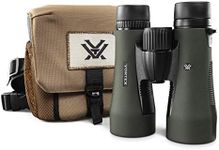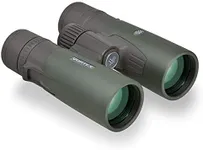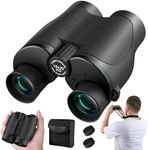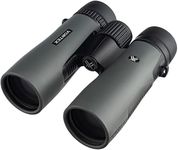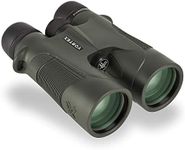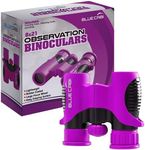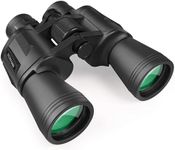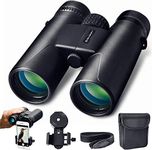Buying Guide for the Best Theatre Binoculars
Choosing the right theatre binoculars can greatly enhance your experience at performances, allowing you to see details on stage that might otherwise be missed. When selecting theatre binoculars, it's important to consider several key specifications to ensure you get the best fit for your needs. Here are the main specs to look at and how to navigate them.MagnificationMagnification refers to how much closer the binoculars can make objects appear. For theatre binoculars, a magnification of 3x to 5x is usually ideal. Higher magnification can make the image shaky and harder to keep steady, especially in a seated position. If you are sitting further back in the theatre, you might prefer a higher magnification within this range, but for most seats, 3x is sufficient to see facial expressions and details clearly without excessive shaking.
Objective Lens DiameterThe objective lens diameter is the size of the front lenses, measured in millimeters. This spec affects the amount of light that enters the binoculars, impacting brightness and clarity. For theatre use, a smaller objective lens diameter (around 20-30mm) is preferable because it keeps the binoculars compact and lightweight, which is important for comfort during long performances. Larger lenses are not necessary since theatres are usually well-lit.
Field of ViewField of view (FOV) is the width of the area you can see through the binoculars, usually measured in feet at a distance of 1,000 yards. A wider FOV is beneficial in a theatre setting because it allows you to see more of the stage without moving the binoculars. Look for a FOV of at least 300 feet at 1,000 yards to ensure you can comfortably follow the action on stage.
Weight and SizeThe weight and size of the binoculars are crucial for comfort, especially during long performances. Lightweight and compact binoculars are easier to hold steady and less tiring to use. Aim for binoculars that weigh less than 10 ounces and are small enough to fit in a purse or pocket. This ensures they are convenient to carry and use without causing strain.
Focus MechanismThe focus mechanism determines how you adjust the clarity of the image. Theatre binoculars often have a central focusing wheel, which is easy to use and allows for quick adjustments. Some models also have individual eyepiece focusing, which can be more precise but is slower to adjust. Choose a focus mechanism that you find easy to use and that allows you to quickly bring the image into sharp focus.
Eye ReliefEye relief is the distance from the eyepiece to your eye while still seeing the full field of view. This is especially important if you wear glasses. Look for binoculars with an eye relief of at least 15mm if you wear glasses, as this will allow you to use the binoculars comfortably without removing your glasses. If you don't wear glasses, shorter eye relief is acceptable.
CoatingLens coating improves light transmission and reduces glare, which can enhance image clarity and brightness. Fully multi-coated lenses are the best option, as they provide the highest quality image. For theatre binoculars, this spec ensures that you get a clear, bright view of the stage, even in varying lighting conditions.
